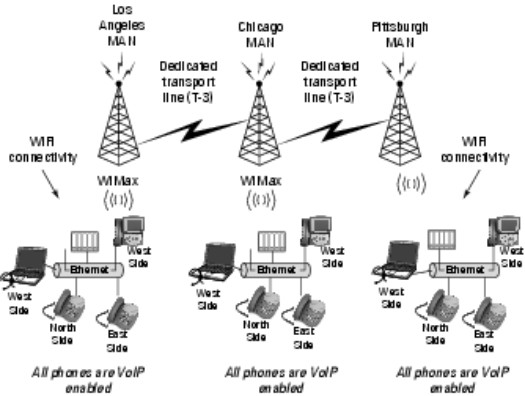One of the big benefits of VoIP (voice over Internet protocol) is that it makes the POTS-PSTN model, together with its complicated billing structure and weird terminology, just go away. (In case you're curious, POTS-PSTN means "plain old telephone system-public switched telephone network.")
Looking at service categories
Traditional carrier services, unlike VoIP telephony, are heavily regulated. That's why you get a phone bill with more small print than the phone book, filled with monthly line-access charges, per-minute usage charges, service charges, taxes, and special fees all applied to the number and type of individual lines your company or family uses.
To add to the confusion, under the PSTN model used in the United States, recurring service charges are tiered into service categories.
After your phone company charges you line-access costs and for any call features you add to each line, it bills you for per-minute usage charges based on your service category. Each phone line you use may be billed for any of the following five service-charge categories:
- Local: Refers to the immediate geographical area, usually no more than a one- to two-mile radius from the telephone from which you're placing a call.
- Intralata: Refers to calls that terminate outside the local calling area but within your local access and transport area (LATA). Also known as local toll, intralata toll, regional toll; local long distance, regional calling.
- Intrastate: Involves carrier services for calls outside the LATA but inside the boundaries of the state where your local access line is installed. Also known as in-state, interlata, state toll, in-state calling, long distance (usually incorrect, depending on the context, but frequently used).
- Interstate: Includes calls to a destination outside the local calling area's state but still inside the United States. Also known as long distance, LD, state-to-state, toll-calling services, calling across state lines.
- International: Phone service originates where you are and terminates in another country.
At the time of this writing, international service is the most highly regulated category. Interstate is the second highest in terms of regulation. Intralata and intrastate come in third in terms of degree of regulation. Local service continues to be the least regulated.
 | Higher regulation and longer distances don't necessarily mean higher cost anymore. Interstate is more regulated than intrastate and intralata, but it is much cheaper on a per-minute rate basis. For example, a corporate customer calling from Pittsburgh to Los Angeles (longer distance) might pay 2 cents per minute. A call from Pittsburgh to Philadelphia (shorter distance), on the other hand, could cost from 6 cents to 62 cents per minute. |
Cutting costs with VoIP
In the POTS-PSTN way of doing telephony, more regulation translates into more add-on service charges per line. Under VoIP, you can eliminate all regulated fees and charges because VoIP is totally nonregulated.
 | Remember, however, that it's almost impossible for VoIP to eliminate all charges for phone service. For instance, if you're a consumer, you should have at least one POTS line in the home for 911 service and other local calls. Because you must use broadband to get VoIP in your home, you should pay the additional fee to keep your POTS phone connected to your broadband service. Use the POTS phone for local calls and 911 emergency service. When the older PSTN catches up with the newer VoIP technology and can support E911 (enhanced 911) calling, you can drop the POTS connection. (With E911, your contact and address information is transmitted along with your call to the 911 emergency center.) |
Local ordinances require businesses to have at least one POTS line for fire control and 911. Your primary goal is to reduce or eliminate the recurring monthly costs with the other four service-charge categories, and your secondary goal is to reduce your local service costs. With VoIP, you can accomplish these goals by making most or all toll-related calls on-net. But until the rest of the world converts to VoIP, you still need some connectivity to the local calling area using POTS.


